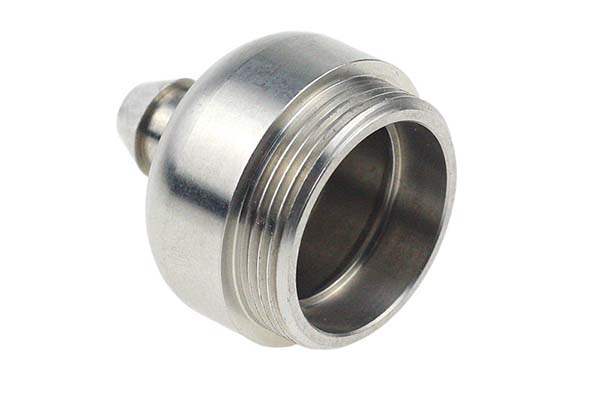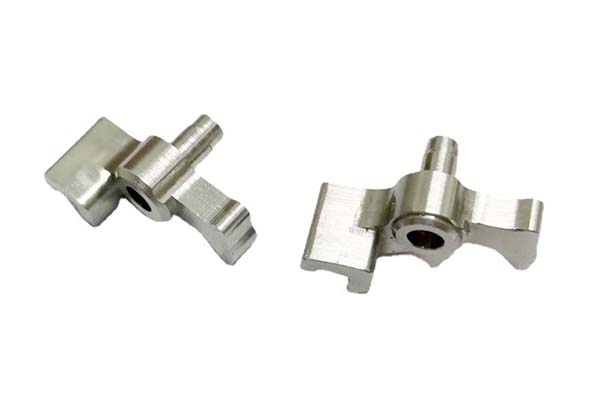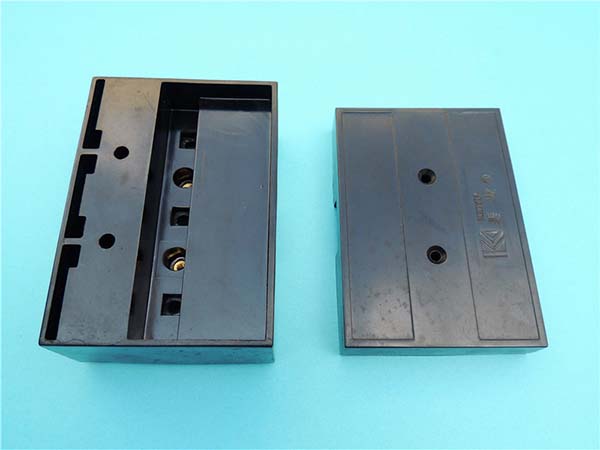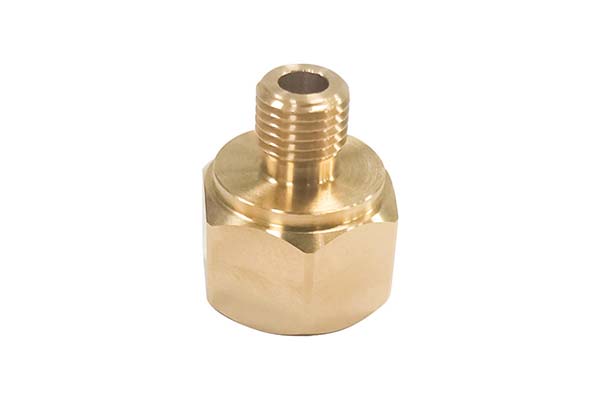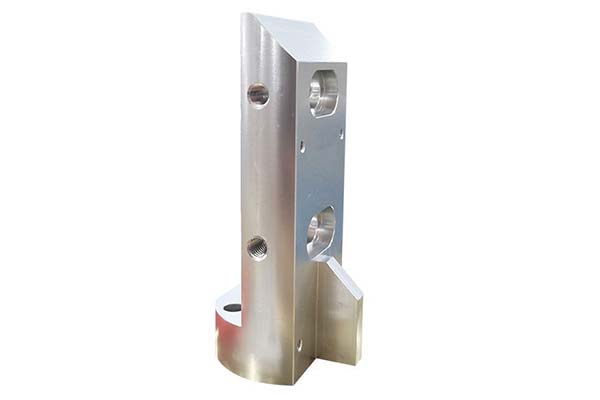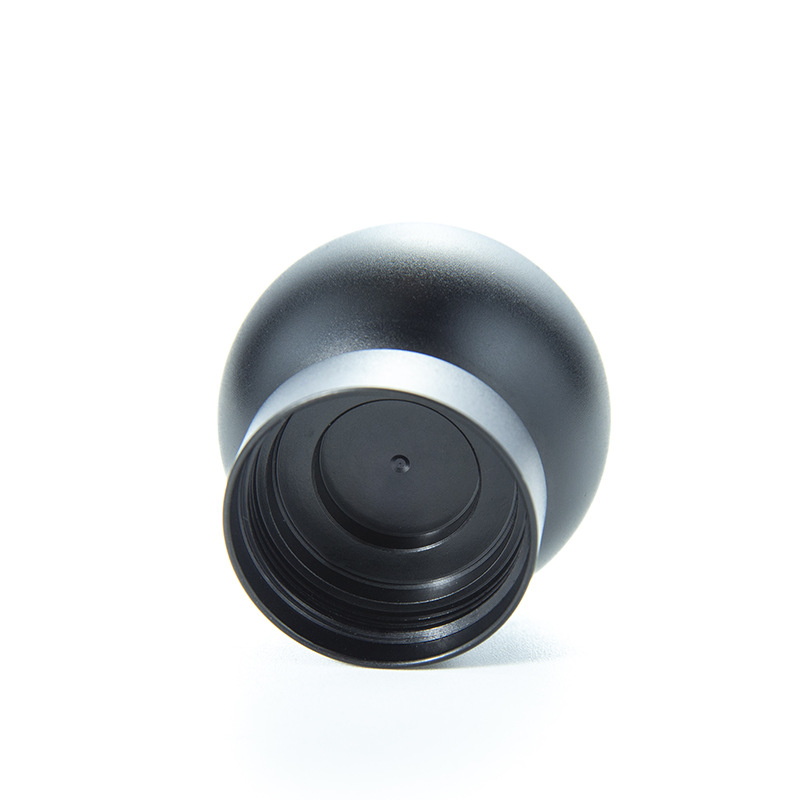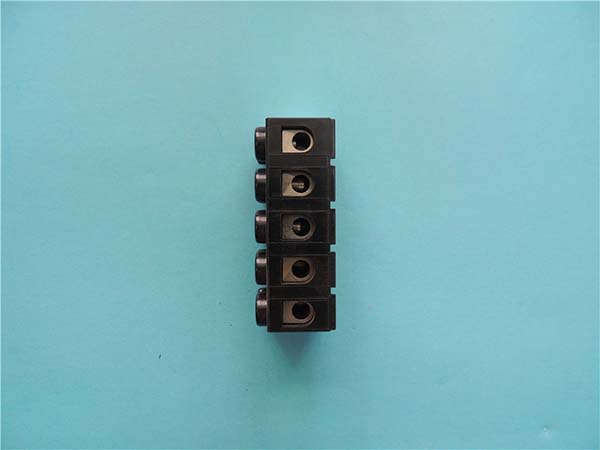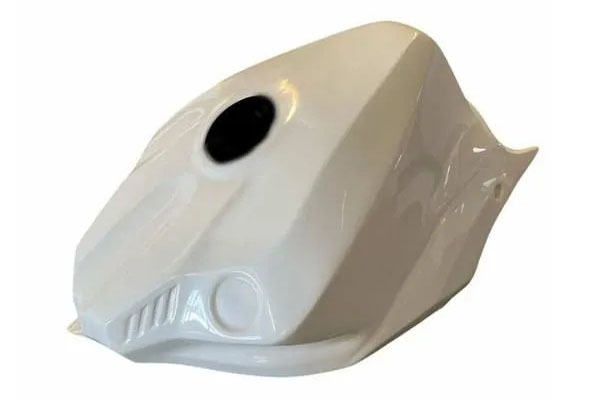Manufacturers working with high-temperature applications often turn to SS347 stainless steel and SS348 stainless steel for their exceptional heat resistance. As austenitic stainless steel grades, they rely on niobium (columbium) and tantalum stabilization to prevent carbide precipitation during welding and high-heat exposure. However, machining them presents unique challenges. Their high alloy content increases work hardening tendencies, leading to rapid tool wear and elevated cutting forces. Additionally, their non-magnetic properties and sensitivity to cutting temperatures demand precise process control. Distinguishing between SS347 and SS348—particularly in applications requiring strict impurity control—requires clear material knowledge to avoid performance gaps. This guide addresses these pain points, offering proven strategies to optimize CNC machining SS347/SS348 for efficiency, quality, and reliability in high-temperature environments.
Material Overview of SS347/SS348
SS347 stainless steel and SS348 stainless steel are austenitic alloys engineered for high-temperature stability and corrosion resistance:
- Mechanical properties: Both offer a tensile strength of 515 MPa, yield strength of 205 MPa, and hardness of 18-22 HRC in the annealed state. They maintain strength at temperatures up to 800°C, with SS348 exhibiting slightly higher creep resistance due to stricter impurity limits.
- Corrosion resistance: Excellent in oxidizing environments and moderate chemicals, thanks to 17-19% chromium and 9-13% nickel. Their stabilization prevents intergranular corrosion after welding, outperforming unstabilized grades like SS304 in high-heat applications.
- High-temperature performance: Superior to most austenitic grades, with SS347/348 retaining 70% of room-temperature strength at 650°C—critical for furnace and jet engine components.
- Chemical composition: Both contain 17-19% chromium, 9-13% nickel, and 0.8-1.0% niobium (minimum 8x carbon content for stabilization). SS348 adds tantalum (0.1-0.3%) and stricter limits on cobalt, boron, and phosphorus, making it suitable for nuclear applications.
- Magnetic properties: Non-magnetic in the annealed state, though cold working can induce slight magnetism—unlike martensitic or ferritic stainless steels.
- Weldability: Excellent, with their stabilized structure preventing carbide precipitation in the heat-affected zone (HAZ), eliminating the need for post-weld annealing in most cases.
These traits make SS347/SS348 ideal for high-temperature applications like boiler casings, furnace parts, and jet engine components.
CNC Machining Processes for SS347/SS348
Core Machining Operations
CNC machining SS347/SS348 requires careful control to manage work hardening and heat generation, with processes tailored to their high-temperature design:
- CNC milling: Effective for shaping furnace components and boiler parts. Climb milling is preferred to minimize tool contact with work-hardened surfaces, reducing cutting forces by 10-15%.
- CNC turning: Suitable for cylindrical parts like exhaust stacks and tubing fasteners, with moderate feed rates to balance material removal and heat buildup.
- CNC drilling and CNC boring: Challenging due to high ductility; sharp tools and peck drilling help manage chip evacuation, critical for deep holes in jet engine parts.
- Machining centers and multi-axis machining: Enhance efficiency for complex parts like aircraft collector rings, ensuring dimensional consistency across heat-exposed surfaces.
Optimal Cutting Parameters
| Operation | Cutting Speed (m/min) | Feed Rate (mm/rev) | Depth of Cut (mm) |
| CNC milling (carbide) | 100-180 | 0.1-0.2 | 1-3 |
| CNC turning (carbide) | 120-200 | 0.12-0.25 | 1.5-4 |
| CNC drilling (carbide) | 80-140 | 0.08-0.15 | 1-2.5 |
These parameters balance material removal rates with work hardening control. SS347 and SS348 have nearly identical machining characteristics, with cutting speeds 5-10% lower than SS304 due to higher niobium content.
Tool Selection and Tooling for SS347/SS348
Choosing the Right Tools
Tool selection for CNC machining SS347/SS348 focuses on wear resistance and heat management:
- Cutting tools: Carbide tools are preferred over high-speed steel due to their superior heat resistance. Fine-grain carbide (WC-Co with 6-8% Co) offers the best balance of toughness and wear resistance for these alloys.
- Tool coatings: AlTiN coatings extend tool life by 40-60% compared to uncoated carbide, thanks to their high-temperature stability (up to 800°C) and reduced friction.
- Tool geometry: Positive rake angles (5-10°) reduce cutting forces, while sharp edges minimize work hardening. Round inserts with large radii are ideal for roughing, while square inserts with honed edges work well for finishing.
- Tool holders: Rigid, shrink-fit holders minimize tool deflection, critical for maintaining tolerances in high-force cutting—common in machining thick-walled boiler components.
- Coolant delivery systems: High-pressure coolant (70-120 bar) delivered directly to the cutting zone reduces heat buildup and flushes chips, preventing re-cutting and work hardening.
Chip Control Strategies
Poor chip control in SS347/SS348 exacerbates work hardening and tool wear. Effective strategies include:
- Using tools with aggressive chip breakers designed for austenitic stainless steels, especially in turning operations on thick sections.
- Adjusting feed rates to promote short, curly chips—avoiding long, stringy chips that wrap around tools and cause heat buildup.
- Implementing chip conveyors with high-speed removal to prevent re-cutting, which accelerates work hardening in these alloys.
Surface Finish and Quality Control
Achieving Desired Surface Characteristics
SS347/SS348’s surface finish is critical for both high-temperature performance and corrosion resistance, as rough surfaces can trap contaminants and accelerate oxidation:
- Surface roughness: Achievable Ra values range from 0.8 μm (finish machining) to 3.2 μm (roughing), with 1.6 μm typical for general-purpose high-temperature parts. Jet engine components often require Ra ≤ 0.8 μm to minimize airflow disruption.
- Surface finish requirements: Furnace parts may need Ra ≤ 1.6 μm to resist scale buildup, while boiler casings require smooth finishes (Ra ≤ 3.2 μm) for efficient heat transfer.
- Finishing processes: Grinding achieves tight tolerances and smooth surfaces for critical components, while electrochemical finishing enhances corrosion resistance by removing micro-burrs.
Quality Control Measures
- Inspection methods: Coordinate Measuring Machines (CMM) verify dimensional accuracy, while profilometers measure surface roughness (Ra, Rz). High-temperature tensile testing ensures compliance with strength requirements at operating temperatures.
- Quality control standards: Compliance with ASTM A240 (sheet/plate) and ASME SA-240M (pressure vessels) ensures material consistency, including niobium (columbium) and tantalum stabilization levels.
- Surface defects to monitor: Tool marks and burrs can act as stress risers in high-heat applications, leading to premature failure. Polishing removes these defects, improving both performance and longevity.
Heat Treatment and Post-Machining Processes
Heat Treatment for SS347/SS348
SS347/SS348 require minimal heat treatment but benefit from specific processes to optimize performance:
- Solution annealing: Heating to 1040-1150°C, followed by water quenching, dissolves carbides and ensures a uniform austenitic structure. This process softens the material (to 18-22 HRC) and enhances corrosion resistance, typically performed before machining.
- Stress relief annealing: Heating to 300-500°C for 1-2 hours reduces residual stresses from machining, preventing distortion in large parts like boiler casings during high-temperature service.
Post-Machining Processes
- Post-machining cleaning: Ultrasonic cleaning removes coolant residues and chips, preventing contamination that could cause pitting or scaling at high temperatures.
- Surface treatments: Passivation (optional) enhances corrosion resistance by restoring the chromium oxide layer, useful for parts exposed to both high heat and moisture.
- Peening: Shot peening adds surface compressive stress, improving fatigue life by 20-30% in cyclic high-temperature applications like exhaust stacks.
Applications of SS347/SS348 Machined Parts
SS347 stainless steel and SS348 stainless steel excel in high-temperature environments where stability and corrosion resistance are critical:
- Boiler casings and furnace heating elements: Withstanding continuous exposure to temperatures up to 800°C without scaling or deformation.
- Aerospace components: Aircraft collector rings, exhaust stacks, and jet engine parts—resisting thermal cycling and oxidation at high altitudes.
- Nuclear industry: SS348’s strict impurity limits make it ideal for reactor components, where cobalt and boron restrictions prevent radiation activation.
- Industrial equipment: Annealing box covers, cabin heaters, and expansion joints—combining high-temperature strength with weldability.
- Tubing fasteners and metal bellows: Maintaining integrity in high-pressure, high-heat systems like chemical processing pipelines.
In jet engine parts, SS347 outperforms SS304 by 30% in creep resistance at 700°C, ensuring reliable performance during long-haul flights.
Technical Specifications and Standards
Adhering to industry standards ensures SS347/SS348 parts meet high-temperature performance requirements:
- ASTM standards: ASTM A240 (sheet/plate), ASTM A276 (bars), and ASTM A269 (tubing) define material properties, including niobium (columbium) and tantalum stabilization levels.
- ASME standards: ASME SA-240M and SA-269 specify requirements for pressure vessel and boiler components, ensuring safety in high-pressure, high-heat applications.
- ISO/EN standards: ISO 15510 and EN 1.4550 cover chemical composition and mechanical properties, with EN 1.4550 aligning closely with SS347 specifications.
- Machining tolerances: Achievable tolerances of ±0.01 mm for small parts and ±0.05 mm for large components, with SS348 offering slightly better dimensional stability due to stricter impurity control.
Challenges and Solutions in Machining SS347/SS348
Overcoming Key Machining Challenges
CNC machining SS347/SS348 presents several challenges, but targeted solutions yield reliable results:
- Work hardening: More pronounced than in SS304 due to higher alloy content. Using sharp AlTiN-coated carbide tools and high coolant pressure (100 bar) minimizes work hardening by reducing tool contact time and heat buildup.
- High cutting forces: 10-15% higher than SS304, requiring rigid machine tools with high torque spindles (≥40 Nm) to prevent tool deflection and maintain accuracy.
- Heat generation: Friction-induced heat softens tools and accelerates work hardening. Intermittent cutting cycles and high-pressure coolant dissipate heat, extending tool life by 30-40%.
- Tool wear: Rapid wear from abrasion and heat. AlTiN-coated carbide tools last 40-60% longer than uncoated tools, offsetting their higher cost in high-volume production.
- Chip evacuation: Stringy chips can wrap around tools, causing damage. Using tools with chip breakers and high coolant flow rates flushes chips, preventing re-cutting and tool binding.
Cost and Efficiency Considerations
Balancing Performance and Cost
CNC machining SS347/SS348 is more expensive than machining SS304, but strategic choices optimize efficiency for high-temperature applications:
- Machining cost: 15-20% higher than SS304 due to slower cutting speeds, increased tool wear, and higher material cost. This premium is justified by 2-3x longer service life in high-temperature environments.
- Tool cost: AlTiN-coated carbide tools cost 2-3x more than uncoated carbide but reduce replacement frequency by 40-60%, lowering total tooling expenses.
- Production rate: Typical rates of 20-40 parts per hour for small components, 80-90% of SS304’s rate but necessary for achieving high-temperature performance.
- Efficiency improvements: High-speed machining centers with rigid frames reduce cycle times by 10-15% by handling higher cutting forces without deflection.
Comparison with Other Materials
How do SS347/SS348 compare to similar high-temperature materials?
| Material | High-Temp Strength (650°C) | Corrosion Resistance (Welded) | Machinability (Relative) | Cost (Relative) |
| SS347 | 70% of RT strength | Excellent | Good (80%) | High |
| SS348 | 72% of RT strength | Excellent | Good (78%) | Very High |
| SS304 | 60% of RT strength | Fair | Very Good (90%) | Medium |
| SS321 | 68% of RT strength | Excellent | Good (82%) | High |
| Inconel 600 | 85% of RT strength | Excellent | Poor (50%) | Very High |
- SS347/SS348 vs. SS304: SS347/348 offer superior high-temperature strength (10-15% higher at 650°C) and corrosion resistance in welded parts, making them worth the premium for high-heat applications.
- SS347 vs. SS321: SS347 has better creep resistance at temperatures above 700°C, while SS321 (titanium-stabilized) offers slightly better machinability.
- SS347/348 vs. Inconel 600: Inconel 600 provides higher high-temperature strength but costs 3-4x more. SS347/348 are cost-effective for applications below 800°C.
Yigu Technology’s Perspective
At Yigu Technology, we specialize in CNC machining SS347/SS348 for aerospace and industrial clients. Our data shows that using AlTiN-coated carbide tools with 100-bar coolant reduces tool wear by 50% compared to standard setups. For high-temperature parts, we recommend solution annealing before machining to ensure uniform machinability. We comply with ASTM A240 and ASME SA-240M, with 100% CMM inspections to verify dimensional accuracy. Our expertise in niobium (columbium) and tantalum stabilization ensures parts meet high-heat performance requirements, making SS347/348 components reliable for furnace, boiler, and aerospace applications.
FAQ
- What distinguishes SS348 from SS347?
SS348 includes tantalum (0.1-0.3%) and stricter limits on cobalt, boron, and phosphorus, making it suitable for nuclear applications where impurity control is critical. SS347 relies solely on niobium for stabilization.
- Why are SS347/348 preferred for high-temperature applications?
Their niobium (columbium) and tantalum stabilization prevents carbide precipitation at high temperatures, maintaining corrosion resistance and strength up to 800°C—outperforming unstabilized grades like SS304.
- How does machining SS347 compare to SS304?
SS347 is harder to machine due to higher work hardening tendencies, requiring slower cutting speeds (10-15% lower) and more durable tools (e.g., AlTiN-coated carbide). However, it offers superior high-temperature performance for critical applications.
